Difference Between a Log Cabin And Timber Frame
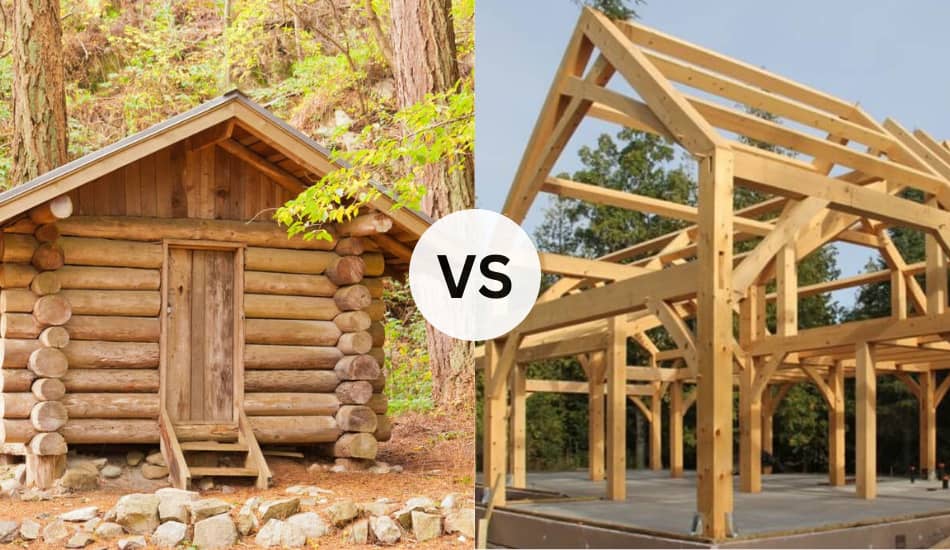
Log cabins and timber-framed homes have a lot in common. However, they aren’t the same. Timber-framed homes and log cabins are built using different techniques, and timber-framed homes have some perks that log cabins just can’t match. In this article, we’ll talk about the main differences between a log cabin and a timber frame. So, let’s start!
What is the Difference Between a Log Cabin Vs Timber Frame? The difference between a log cabin and a timber frame home is how they use wood. Log cabins are made by stacking logs on top of each other. Timber frame homes use big beams to create a frame, and the space between can be filled with different materials.
Although these are only some of the differences you will notice at first, there are also some other important factors. In this article, we will cover everything you need to know about this topic. But before that, let’s first learn what a log cabin and a timber frame home are.
Table of Contents
What Is a Log Cabin?
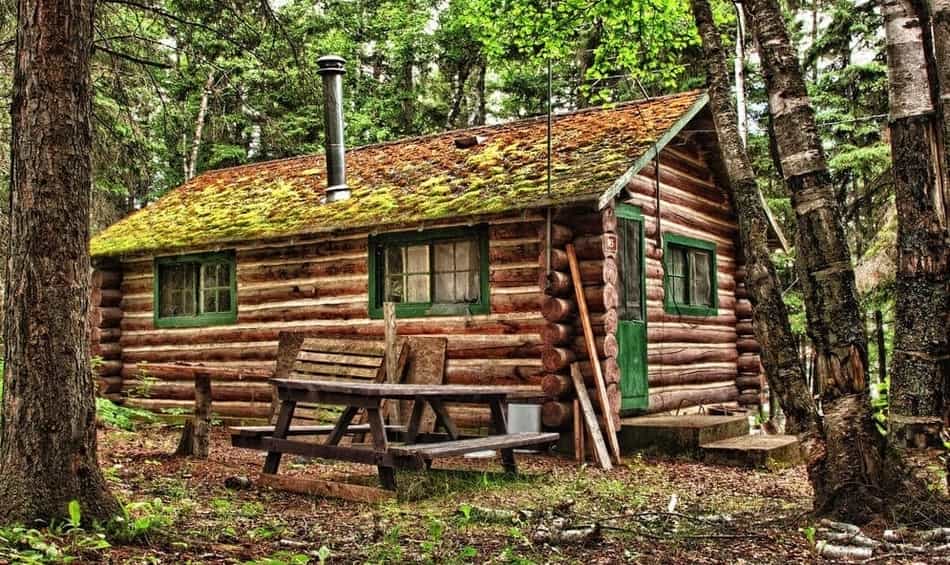
A log cabin is a house made from big wooden logs stacked on top of each other. When many think of a Log Cabin, they think about large, sturdy logs stacked together, set in a remote place with a lot of snow – kind of like what you see in classic American films.
People have been building these cabins for a very long time because they are strong and simple. You usually find them in places with lots of trees. They look old-fashioned and cozy, with the ends of the logs sticking out. Today, some log cabins have electricity and running water inside.
What is a Timber Frame Home?
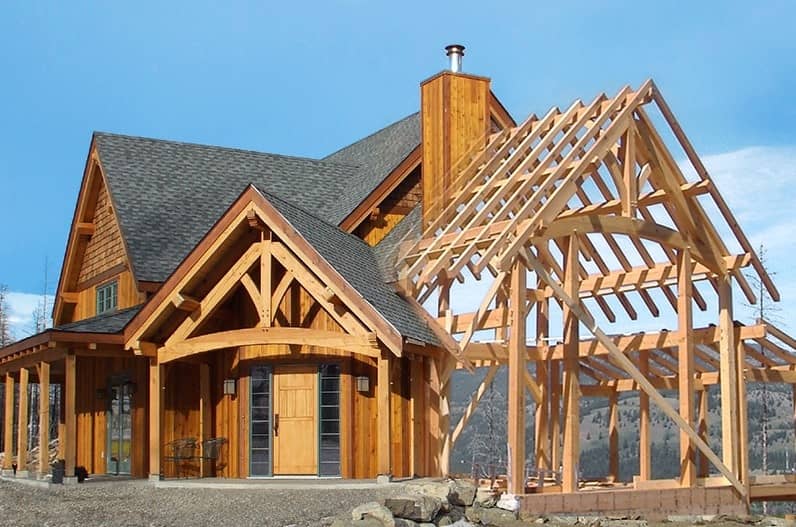
A timber frame home is built using large beams and posts that are joined together to create a frame. The spaces between the frame can be filled with various materials, often for insulation or design. This type of construction allows for open and flexible interior spaces.
The main thing that sets timber frame homes apart from traditional log cabins is their design flexibility. This means they have a wooden frame (think of it like a skeleton) made of vertical posts holding up horizontal beams.
These beams fit together using special joints called mortise and tenon, which help carry the home’s weight. Because of this structure, there’s no need for walls inside to hold up the house, giving it a spacious feel.
Instead of using logs, many constructors opt for insulated panels to fill the gaps between the wooden frame. This choice boosts energy-saving and offers more freedom in designing both the inside and outside of the house.
For instance, someone might pick half-log siding outside to get that classic log home look without the full cost and use barn wood siding inside for a cozy, old-school touch.
Here you can see what Timber Frame construction looks like:
Related Article: Difference Between a Log Cabin And Garden Room
5 Main Differences Between Log Cabin And Timber Frame
While log cabins and timber frame homes might seem similar, they differ in how the wood is used. This leads to a distinctly unique appearance for each. Timber homes can have diverse exterior materials, making them sometimes unrecognizable as timber structures from the outside, while log cabins are generally easy to spot. Here are the 5 main differences between these two:
1. How They Are Constructed
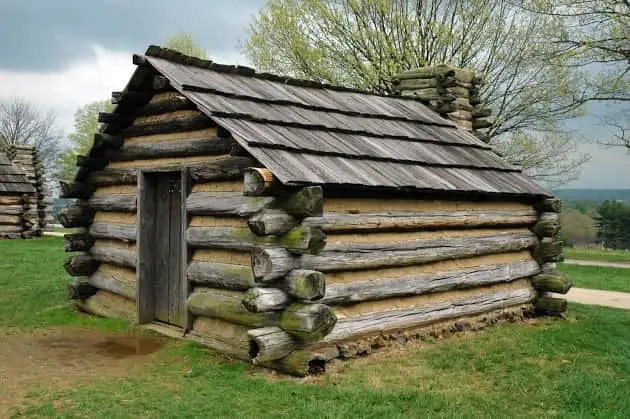
Log homes are constructed by placing logs horizontally atop one another, resulting in walls that bear the structure’s weight. Consequently, both interior and exterior walls are made of logs, limiting design choices. On the other hand, timber frame homes employ a long-standing construction technique known for producing highly robust buildings.
Large timbers are intricately assembled into a carefully designed frame with interconnecting joints. Woodhouse sets itself apart by using “housed” joints, a method in which one timber has a pocket to fully encompass the end of another timber or frame component.
This approach prevents twisting and splitting gaps that might emerge as timber shrinks. Though this process demands additional time and attention, the repercussions of omitting it aren’t immediately evident, which is why many timber frame businesses overlook it.
However, companies with a reputation commit to this technique, ensuring their timbers are housed whenever suitable to maintain the home’s pristine look for future generations.
2. Energy Efficiency
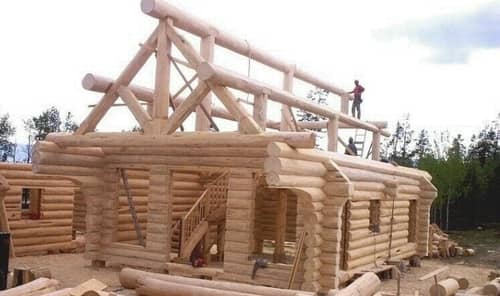
Log cabins do not offer a very high level of energy efficiency. Their insulation is not that good compared to timber frame homes. Timber frame houses are among the best for saving energy thanks to solar power, special insulated panels called SIPs, and eco-friendly building ways.
Using energy wisely is very important to many people who build homes. Therefore, if you are one of those people who pay a lot of attention to energy efficiency, the choice will not be difficult for you.
Related Article: Difference Between a Log Cabin And RV
3. Different Interiors
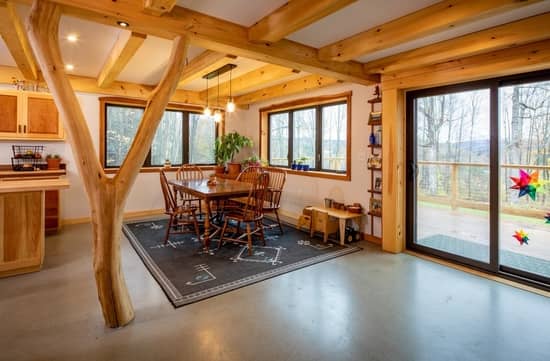
Both timber frame and log cabin homes show off the lovely wood look and have big open spaces inside. But timber frame houses have a special thing – you can change their look inside more than you can with log cabin homes.
That’s because, in timber frame houses, the walls and roof just hang on the big frame. In log cabin homes, the logs are the walls on the inside and the outside. That is the main difference when it comes to the interior.
4. Different Exterior
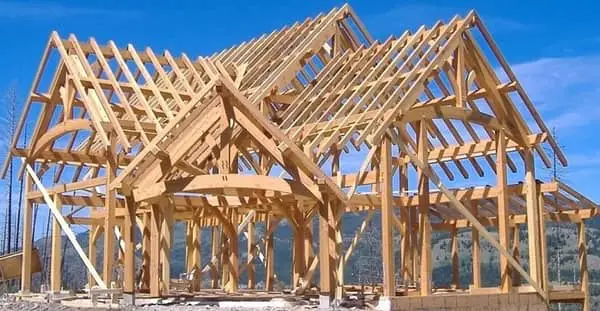
Log cabin and timber frame homes might sound like they’re the same, but they look different when you see them. For timber frame homes, you can choose how you want the outside to look. It can have wood on the outside or other materials like bricks stones, or even look like a log house.
But you can’t put siding, bricks, or stones on the outside for log cabin homes. Both types of houses look lovely with their wooden feel, but they have different pros and cons.
5. Costs
The cost of building a log cabin versus a timber frame home can vary widely based on several factors, including the location, design intricacies, quality of materials used, local labor rates, and the desired finishes. The cost of log cabin homes might initially appear lower, especially if simpler designs and readily available logs are used.
Timber frame construction can be more expensive upfront, especially due to the complexity of joinery and the quality of timbers used. However, the long-term maintenance costs might be lower than log homes, especially if the home is well-built. So, while timber frame houses might cost more, they have special things that make them worth it.
Here is also one interesting video that shows the main differences between Log Cabin Vs Timber Frame Homes:
Related Article: Differences Between Log Home And Log Cabin
Similarities Between Log Cabin And Timber Frame
Even though log cabins and timber frame homes look different, they have much in common. Here’s what they share:
- Both types of houses are special and made just for the person buying them. They are sent in pieces and then put together in a certain way.
- Both use big pieces of round or square-shaped wood that fit together to hold up the house.
- A long time ago, many people in America lived in these homes. But then, not many people built them for a while. In the 1970s, people started loving them again, and many were built.
- Both often have big open spaces inside, high ceilings, big windows to see nice views, fancy wood designs on the ceiling, and big fireplaces.
- There are many designs to choose from for both kinds of homes.
- Most of the time, these houses are built in the countryside or faraway places. Building in these spots can be tricky because they might be far from roads, water, or electricity.
- The steps to get one of these houses are pretty much the same: Find land. Make a house plan. Get the land ready. Put the house together. Add furniture and make the outside look nice. Then, enjoy your new home!
FAQ: People Also Ask
Are timber frames better?
Timber frame homes can keep warmth better than brick houses because they have more room for stuff that keeps cold or heat out. Plus, the wood itself helps keep the inside temperature just right. When a house is good at staying warm or cool, it uses less energy, which is better for the planet.
What is the best material for a log cabin?
Glulam is a really good wood for log cabins. It’s tough and lasts a long time. Plus, it’s easy to take care of. How much you pay for the wood for a log cabin can change based on how big the cabin is, how it looks, and what wood you pick.
Final Thoughts
Log cabins and timber frame homes are both special but in different ways. Log cabins use stacked logs, making them easily recognizable. Timber frame homes use big beams and can look different on the outside. While both types of houses use wood, they offer different styles and feelings. Choosing between them depends on what look and feel you prefer for your home. I hope this article has helped you, and if you have any additional questions, feel free to leave a comment below.

